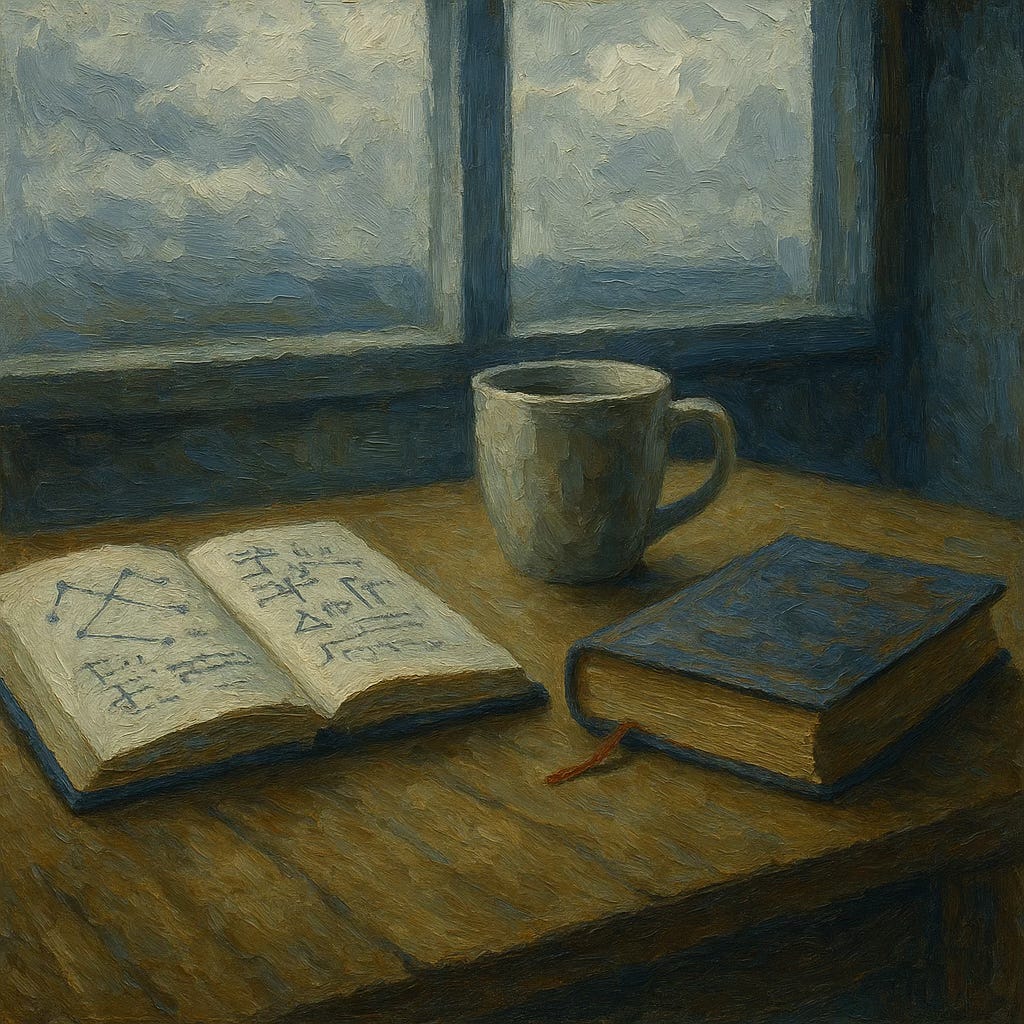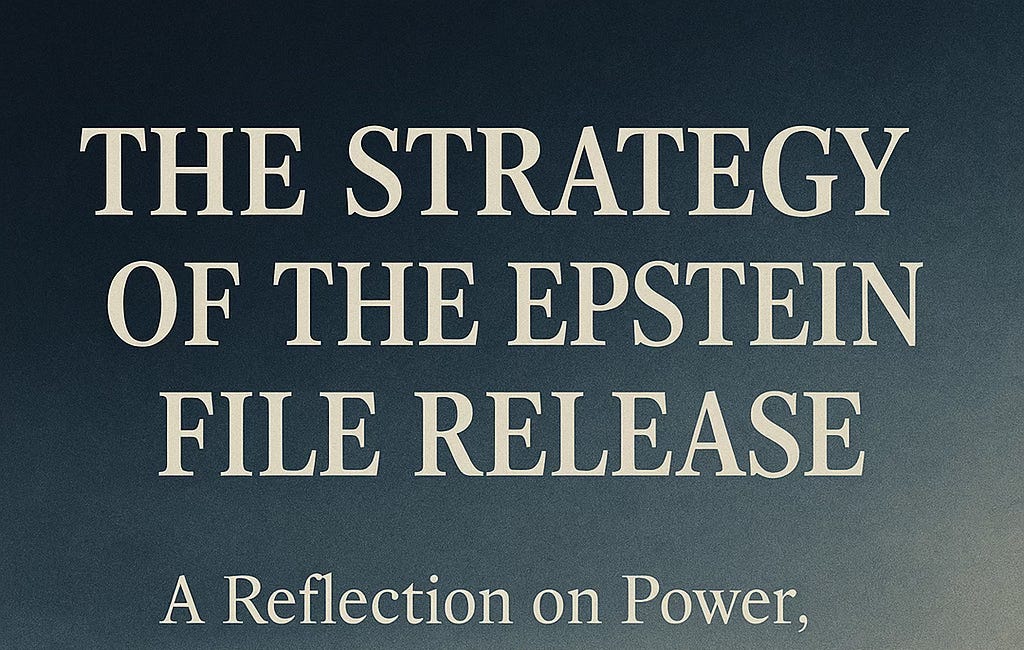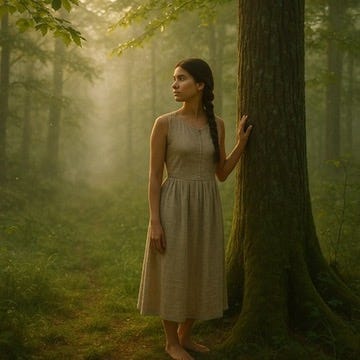Science and Faith: Not Enemies, But Partners
Reframing the Science and Faith Relationship
“You do not need to choose between the light of reason and the fire of the spirit. Both are required for the journey.”—John O’Donohue
I grew up being told that science and faith could never sit at the same table. You had to choose. Pick your corner. Declare your loyalty to either the measurable or the mysterious. It always felt like an ultimatum written by people who wanted simplicity more than truth. What I actually lived never matched the story.
I cared about how the world worked. I also cared about why it mattered. I could marvel at starlight and still wonder what a life’s for. That was the first clue that something about the so called conflict was wrong. The world inside me never seemed interested in a fight. The world around me kept insisting on one.
I remember one night on duty years ago, standing beside a young man who’d just lost someone he loved. Science could tell me what was happening to his heart rate, his cortisol levels, his brain chemistry. None of those facts helped him breathe. What he needed in that moment was presence and mercy and the sense that life still had a center. I learned something important that night. Science could explain the storm. Faith helped steady the person caught inside it. That was the beginning of my suspicion that the conflict story was too small to hold everything that makes us human.
The False War Story
The war between science and faith was a story built long before most of us ever entered the conversation. It comforts people who want a clear winner. It’s tidy. It’s dramatic. It’s also dishonest. Human beings rarely live in tidy lines. We live in tangled questions.
The conflict story survives because it’s easier to defend a side than to explore a mystery. It’s easier to mock than to understand. It’s easier to treat other people like strange specimens than to admit they might be wrestling with the same longings we carry. And it’s much easier to argue online about cosmology than to sit quietly with your own fear of meaninglessness.
What Science Actually Does
Whenever I think about science, I return to something simple. It’s disciplined curiosity. It’s the patient refusal to accept lazy answers. It’s the practice of asking reality to reveal itself and being honest when it doesn’t cooperate with our assumptions.
In my twenties I learned that everything around me was built from particles that were mostly empty space. That single fact moved me in a way I still can’t fully explain. It felt like standing inside a cathedral made of silence. Science does that sometimes. It opens a door in your mind you didn’t know was there.
Good science never tries to become a religion. It simply asks better questions. It maps the shape of the world without pretending to map the meaning of it. It can tell you how neurons fire when you fall in love. It can’t tell you why falling in love makes life feel possible. It can measure the age of light. It can’t tell you why sunrise carries its own kind of mercy.
What Faith Actually Does
Faith, at its heart, isn’t a set of commands. It’s an orientation toward meaning. It’s the stubborn belief that life isn’t nothing. It asks the questions we can’t stop asking even when we try to bury them under distractions. Why are we here. What do we owe to one another. How do we live with suffering. How do we remain kind in a world that rewards cruelty. How do we keep hope alive when experience tells us not to.
Faith gives shape to the inner world. It teaches us to love, to forgive, to stay, to begin again. It gives us language for courage. And it often shows up in the very places where our rational strength breaks down.
I joke with friends that faith asks the questions Google never seems to answer. The joke works because there’s truth in it. Faith lives in the territory beyond utility. Science teaches me how to build a boat. Faith teaches me why I must keep rowing.
The Complementarity We Keep Missing
There’s a partnership here that most people overlook. Science reveals the structure of reality. Faith reveals the significance of that structure. Science gives us clarity. Faith gives us meaning. Science describes the world. Faith tells us how to live within it.
Science can measure dopamine levels, but it can’t teach someone how to recover from betrayal. Faith can comfort a grieving parent, but it can’t calculate the trajectory of a meteor. Science can describe entropy, but faith helps us resist despair. Science can model the lifespan of stars, but faith teaches us how to live before we burn out.
One discipline gives us tools. The other gives us purpose. We need both.
When Either Side Goes Rogue
The trouble begins when either side forgets what it’s for. Science turns dangerous when it claims absolute authority. Faith turns dangerous when it claims absolute certainty. I’ve watched people use science to belittle others as if facts were weapons. I’ve watched people use faith to harm others as if God required cruelty. Both distortions come from fear. Neither reflects the beauty or integrity of the thing they claim to protect.
Science without humility becomes cruelty dressed in logic. Faith without courage becomes fear dressed in devotion. Neither is worthy of us.
The Quiet Dialogue Already Happening
Most people already live in a blend of both worlds even if they don’t admit it. I’ve known engineers who whisper prayers during turbulence. I’ve known ministers who read quantum physics for fun. I’ve known physicians who lean on both data and compassion because they know one without the other is incomplete.
During my years in the military and government service, I saw the same pattern everywhere. Evidence guided decisions. Ethics guided the people making them. Lives were protected not just through training and procedure but through a kind of moral instinct that no equation can fully express. I came to understand that the real dialogue between science and faith isn’t happening in lecture halls. It’s happening in crisis rooms, on street corners, in classrooms, and in quiet living rooms where people are trying to decide how to be good in a world that gives them every reason not to be.
A New Story About Knowing
A friend once told me that the universe is expanding faster than expected. A pastor once told me that the human heart expands the same way when it chooses to. I’ve spent most of my life trying to believe them both. That may be the closest thing I have to a creed.
Science asks what’s true. Faith asks what’s good. Together they help us become whole people instead of lopsided ones. Together they teach us to remain teachable and humble and awake. Together they reveal a world that’s both explainable and meaningful.
The more I let both voices speak, the more I feel like I’m living with both eyes open. I can study the world and still love its mystery. I can learn how things work without forgetting why they matter. I can choose to live in a reality that’s richer than the categories we try to force on one another.
Closing Summation
Science and faith were never meant to be rivals. They’re partners in the long search for understanding and purpose. One gives us knowledge. The other gives us wisdom. One maps the world. The other gives us courage to walk it.
I want to see with both eyes because I’ve lived long enough to know that one eye always leaves something out.
Please Support the Work
This work is free for all because light should never be gated. If these words feel like a lantern in your hands, you can help keep it burning. Your support makes sure the flame doesn’t go out. You can make a monthly or yearly donation below.
Dino’s Homily and Poetry Shop here
Light Against Empire - The Podcast here






